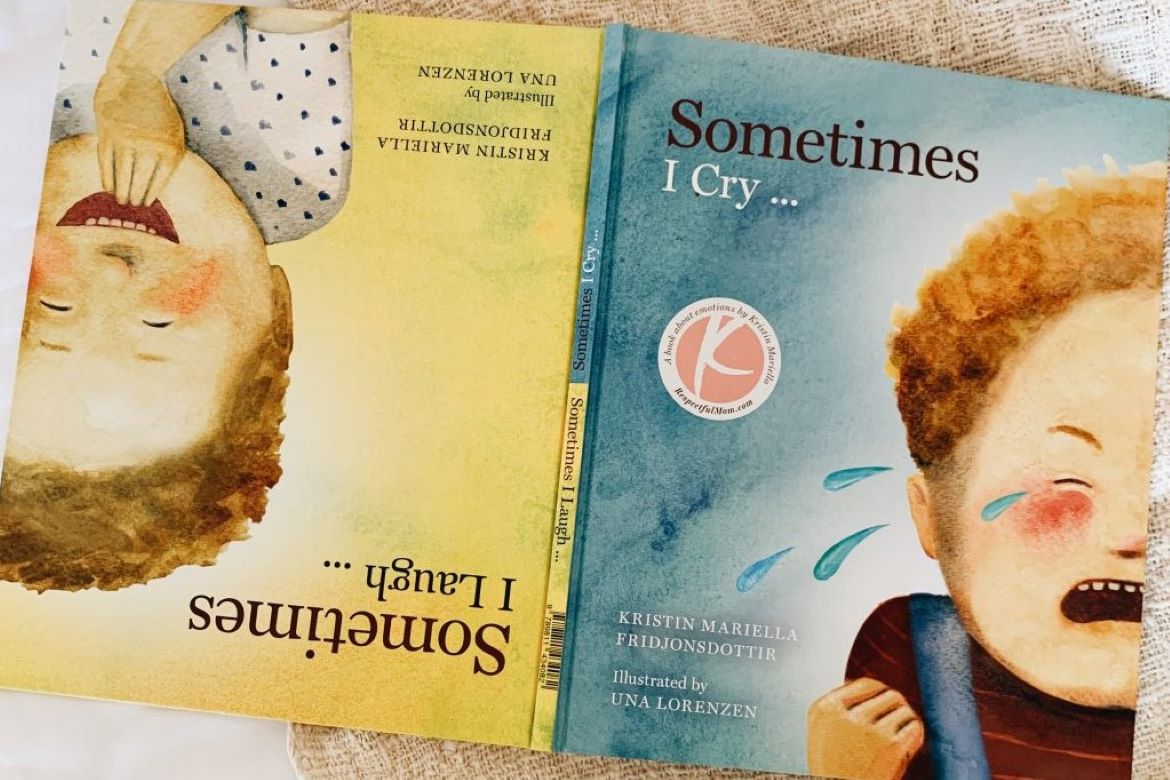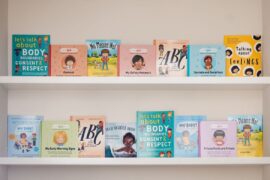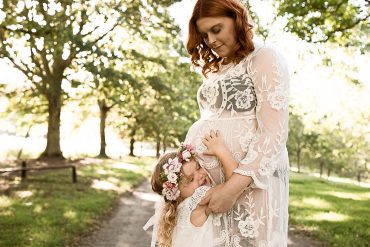By Kristin Maríella
For quite some time, I’ve had a desire to write a children’s book about emotions. But I didn’t just want the book to talk about emotions; I wanted it to acknowledge and respect emotions. I wanted to write a book that I would feel good about reading to my own children, one that conveys a healthy view of emotions. And while my book is certainly a children’s book, I’ve also written it with their parents and other adults in their lives in mind. In fact, because of how it models respectful communication and gives parent’s language for empathic limit-setting, “Sometimes I Cry / Sometimes I Laugh” could even be viewed as a parent handbook of sorts.
So the book is actually double sided, starting from either side, the book tells two stories that begin separately and meet in the middle. It’s meant to be symbolic, as the book explores opposite ends of the emotional spectrum and takes a holistic approach to examining these contrasting feelings and the ways we express them.

The book talks openly about both crying and laughing, without judging one to be better or more correct than the other. The central message being that all emotions, both positive and negative, are valid, and that children should always be given space to express their feelings and be met with empathy and understanding when they do. It’s a message that I am incredibly passionate about, and I believe this is the single most important shift that we as parents can make in our thinking.
If we can truly internalise the idea that all emotions are valid and deserve to be expressed, we will be much better equipped to support our children in developing healthy emotional balance and emotional intelligence.
I believe it does a person a great disservice in life to be afraid of a normal part of their existence, to be ashamed or constantly try and avoid feeling bad/sad/angry/frustrated/disappointed. The sad reality is that most of us actually are scared or afraid of our negative emotions, whether we are aware of that or not. Most of us grew up repeatedly receiving the message that these emotions were “bad” and not to be expressed or even felt. We were scolded, punished or shamed for crying or expressing our upsets as children. But how are we supposed to handle life if we can’t handle a perfectly normal part of it?

As a parent educator I work a lot with parents. And because of a deeper level of understanding on emotional development, people are waking up to a newfound awareness on how to best relate to and support children as well as each other. Generally, parents understand the concept of accepting emotions and the importance of allowing emotional expression, we get that it’s bad to stuff our feelings.
But then in real life, when things get hectic, our child has a crying fit or we need to set boundaries, parents tend to go a bit blank. Like we know what we “should” do and we understand it when we read it in a clever parenting book but what does it really look like? How do we apply these concepts in real life?











